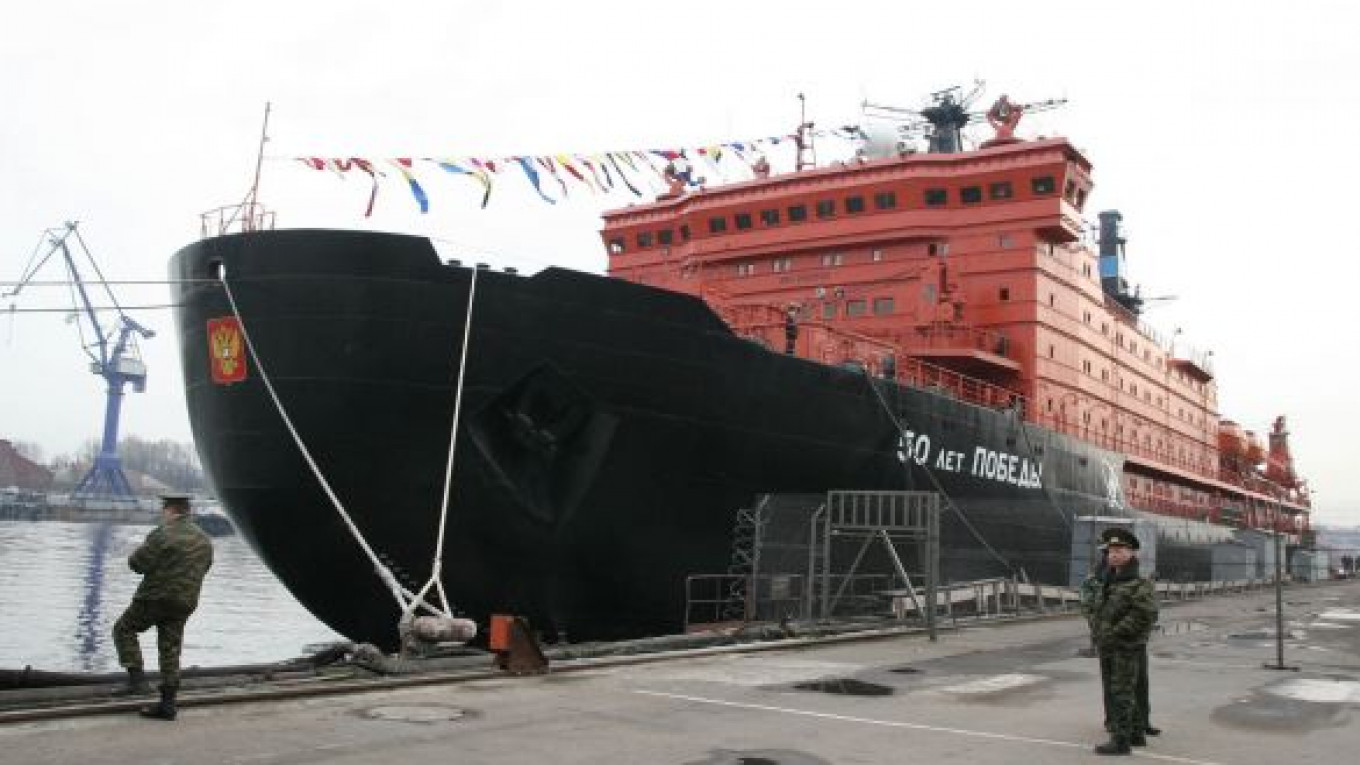LONDON — The new Arctic shipping route running along Russia's northern shore that opened up due to climate change will not be crowded any time soon.
Cargoes of coal, diesel and gas have made the trip but high insurance costs, slow going and strict environmental rules mean there will not be a rush to follow them.
Looser ice means icebergs. One vessel has already been holed, and large ice breaking vessels, not always on hand, are a must.
"Significant safety and navigational concerns remain an obstacle to commercial shipping in the Northern Sea route, despite recent media reports of 'successful' transits," said Richard Hurley, a senior analyst at shipping intelligence publisher IHS Maritime.
"AIS [ship] tracking of vessels in the area shows all vessels are subject to deviation from direct routes as a result of ice, and many areas still cannot be navigated safely without the presence of large icebreakers able to provide assistance such as lead through to clearer waters."
Sporadic Success
Last month, a dry bulk vessel carrying coal from Canada passed through the Northwest Passage to deliver a cargo to Finland, in a trip its operators said would save $80,000 worth of fuel and cut shipping time by a week.
The world's top oil trader Vitol brought tankers in October with Asian diesel to Europe via the Northern Sea route over Russia, potentially saving hundreds of thousands of dollars in costs.
The fast-growing liquefied natural gas market, in which Arctic players like Russia and Norway play a big role, has also seen maiden Arctic voyages.
Hurley said the passage of the Yong Sheng cargo vessel in August from China to Europe via the Northern Sea was only possible with the aid of the world's largest nuclear powered icebreaker, 50 Let Pobedy, to get it through the Lapatev Sea. Ship tracking showed only four large icebreakers were available at any one time to cover the whole Northern sea route.
Separately, a small Russian oil products tanker was holed in September in the Kara Sea, also off Russia.
"Even though damage was minimal and did not cause a pollution incident, the holing revealed the fragility of emergency help," Hurley said. "Taken together, all the inherent dangers and concerns over potential Arctic pollution count heavily against time and cost savings alone when assessing the commercial viability of the seaway."
Insurance and Containers
The market is also still nascent for insurers.
"The key obstacle here will remain the insurance, as it is still simply too risky a proposition for standard commercial insurers," said Michael Frodl of U.S.-based consultancy C-Level Maritime Risks, who advises insurers.
"The ships are not ready, the support facilities and port infrastructure are not yet in place, and the risks have not been figured out enough to price insurance correctly."
Others say the commercial potential is unlikely to be viable for container ships, which transport consumer goods, partly as trade flows develop beyond China in coming decades towards other regions including Africa and South America.
"The further away global trade moves from a totally China-centric export pattern, the more a short 'polar' route loses its appeal," said Jan Tiedemann, shipping analyst with consultancy Alphaliner.
"The Southern route — even if longer — will always have the advantage of serving numerous markets at the same time. Think of the Middle East. Think of transshipment via the [Malacca] Straits to Australia and New Zealand. Think of transshipment in Arabia for East Africa. Think of Med and Black Sea loops," he said.
Environment Dictates Cargo
Until recent years, harsh weather conditions, which can drop to 40 to 50 degrees centigrade below zero, had limited Arctic shipping mostly to small freighters and icebreakers that supplied northern communities in Canada, Norway or Russia.
According to French ship classification society Bureau Veritas, there were 40 Arctic route trading voyages in 2012 for all vessel classes, including oil tankers, with about one million tons of cargo moved. That compared with 700 million tons transported through the Suez Canal.
Knut Espen Solberg of Norwegian shipping and offshore classification group Det Norske Veritas, said dry bulk vessels carrying coal were best suited for Arctic shipping as the potential for environmental damage was less.
"Oil and container spills have a much bigger potential environmental impact than coal, so their shipping is likely to be restricted heavily," said Solberg, a former Arctic mariner.
A Message from The Moscow Times:
Dear readers,
We are facing unprecedented challenges. Russia's Prosecutor General's Office has designated The Moscow Times as an "undesirable" organization, criminalizing our work and putting our staff at risk of prosecution. This follows our earlier unjust labeling as a "foreign agent."
These actions are direct attempts to silence independent journalism in Russia. The authorities claim our work "discredits the decisions of the Russian leadership." We see things differently: we strive to provide accurate, unbiased reporting on Russia.
We, the journalists of The Moscow Times, refuse to be silenced. But to continue our work, we need your help.
Your support, no matter how small, makes a world of difference. If you can, please support us monthly starting from just $2. It's quick to set up, and every contribution makes a significant impact.
By supporting The Moscow Times, you're defending open, independent journalism in the face of repression. Thank you for standing with us.
Remind me later.






